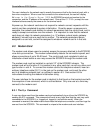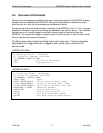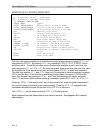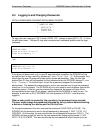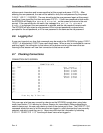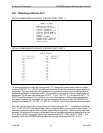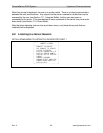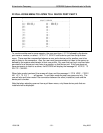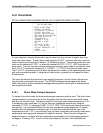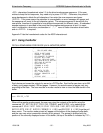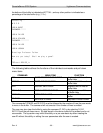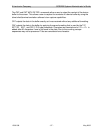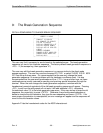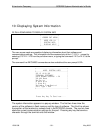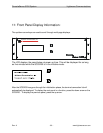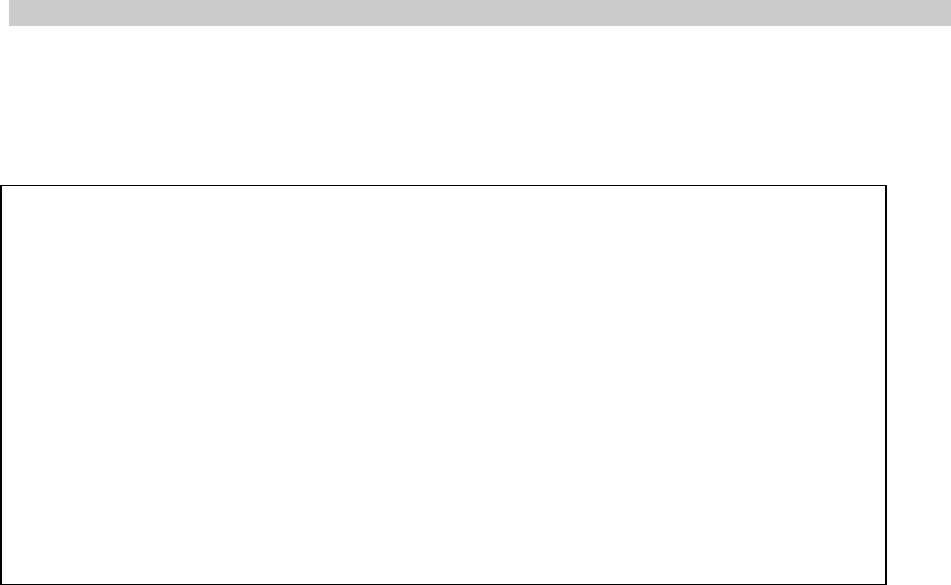
ConsoleServer 3200 System Lightwave Communications
Rev. A - 84 - www.lightwavecom.com
8.10 Direct Mode
F2 PULL-DOWN MENU SHOWING DEVICE (A.K.A. MONITOR) MODE OPTIONS
+-------------------------+
¦ DEVICE MODE MENU ¦
+-------------------------¦
¦ ENTER DIRECT MODE ¦
¦ CONNECT TO SERVER ¦
¦ DIR CONNECT TO SERVER ¦
¦ DISPLAY NEXT PAGE ¦
¦ DISPLAY PREVIOUS PAGE ¦
¦ GOTO BEGINING OF BUFFER ¦
¦ GOTO END OF BUFFER ¦
¦ CLEAR BUFFER ¦
¦ FORWARD N LINES ¦
¦ REVERSE N LINES ¦
¦ CAT ¦
¦ CAT WITH FILTER ¦
¦ EXIT FROM SERVER ¦
¦ DISPLAY CONNECTED LIST ¦
¦ LOGOUT ¦
¦ DISPLAY HELP ¦
+-------------------------+
If a user desires to interact directly with a server rather than only monitor its output, then they
must enter direct mode. To enter direct mode using the DIRECT command, the user must first
select a device port as outlined in Section 7.8, Selecting a Server. Then at the prompt, the user
must use the command DIRECT or select the command ENTER DIRECT MODE from the pull-
down menu. The user may also select a device port and enter direct mode in one step by using
the DISELECT command or selecting DIR CONNECT TO SERVER from the pull-down menu.
The DISELECT command must have either the device port number or the name assigned to the
port as the command qualifier; if using the pull-down menu, a prompt box will appear to select
the device port.
The user's terminal will then be directly connected to the server, and will act as if the terminal
was physically connected to the server. The SCS3230 displays the last page of the device
buffer along with a system information message indicating which device port is selected as the
user enters direct mode.
8.10.1 Direct Mode Escape Sequence
To escape from direct mode, the direct mode escape sequence must be used. The direct mode
escape sequence is a series of two to five characters that allow the user to leave direct mode
and return to monitor mode. The factory default for the direct mode escape sequence is <ESC>
A (escape key, then uppercase "a"), but the user may change the sequence by using the
command EDITESC or selecting CHANGE DIRECT MODE ESC from the pull-down menu at the
user prompt. It is recommended that the user only change the escape sequence if it causes
problems with the hardware or software used. It is also recommended that the user avoid
combinations of the <CTRL> key and other keys, as these combinations are usually reserved for
sending and receiving special characters through the terminal. When the user changes the
escape sequence, a window with the hexadecimal representation of the old escape sequence
will appear. Pressing <ESC> to exit from the edit prompt will not work; it will add additional



